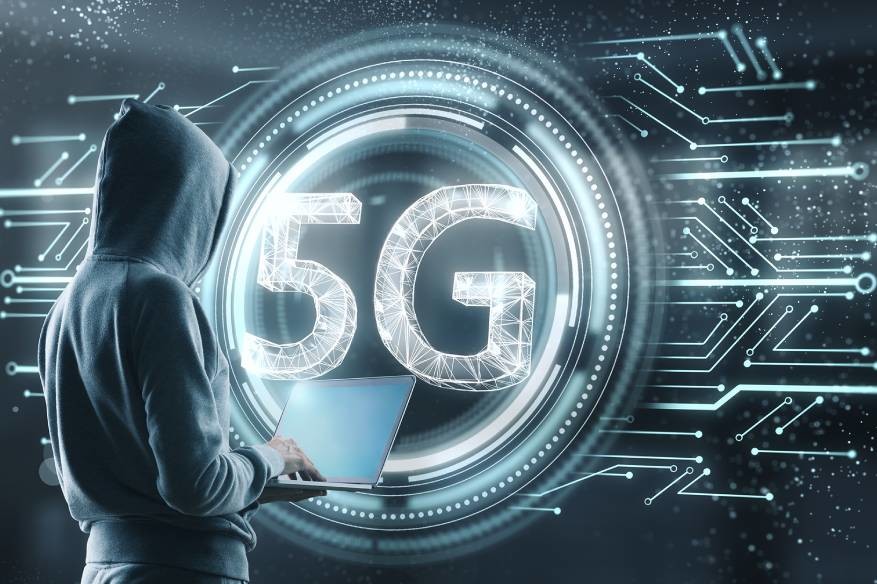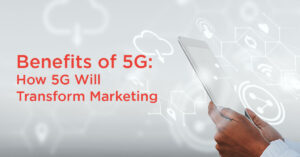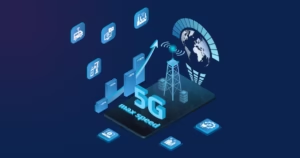As the world transitions to 5G technology, it promises to revolutionize the way we communicate, work, and interact with technology. 5G networks are poised to provide faster internet speeds, lower latency, and improved connectivity, which will have profound effects on everything from consumer electronics to autonomous vehicles. However, as with any new technology, the widespread deployment of 5G comes with certain security and privacy risks that need to be understood and addressed.
This article explores the potential security and privacy challenges associated with 5G networks, how they may impact individuals and businesses, and what steps can be taken to mitigate these risks.
The 5G Revolution: What’s at Stake?
5G networks are designed to offer faster speeds, increased capacity, and enhanced connectivity, enabling new technologies and use cases like smart cities, connected devices, augmented reality (AR), and virtual reality (VR). With the promise of these capabilities, 5G is expected to support an even more interconnected world.
However, as we move toward a more connected world, we must consider how the security and privacy risks that accompany such a transformation can be managed. Understanding these risks is critical for businesses, governments, and consumers alike.
Security Risks Associated with 5G Networks
While 5G offers numerous advantages in terms of performance and connectivity, it also introduces new vulnerabilities that could be exploited by cybercriminals. The very design of 5G — which requires a massive number of devices and complex infrastructure — opens up several points of attack. Below are the primary security risks associated with 5G networks.
1. Increased Attack Surface
With 5G’s capabilities, more devices are expected to connect to the network, creating a broader attack surface. In 5G, devices ranging from smartphones to IoT (Internet of Things) sensors, autonomous vehicles, medical devices, and even home appliances will be interconnected. This dramatically increases the number of potential entry points for cybercriminals to exploit.
How it Helps:
- More Devices = More Targets: The large number of interconnected devices in the 5G ecosystem increases the risk of attacks targeting individual devices or even entire networks.
- IoT Vulnerabilities: Many IoT devices lack proper security mechanisms, which can make them vulnerable to cyber-attacks, potentially leading to widespread damage if compromised.
How to Mitigate:
- Enhanced Device Authentication: Implementing strong authentication methods and encryption for IoT devices can help prevent unauthorized access.
- Network Segmentation: Separating critical infrastructure and sensitive devices from other parts of the network can limit the damage in case of a breach.
2. 5G Network Slicing Vulnerabilities
5G networks utilize a concept called “network slicing,” where a single physical network is divided into multiple virtual networks (or “slices”) that can serve specific purposes or industries. For example, one slice might be dedicated to healthcare applications, while another is for autonomous vehicles.
While network slicing provides flexibility, it also creates an opportunity for cybercriminals to target specific slices if they are not properly secured. A breach in one slice could lead to a cascading effect across other slices, affecting critical systems and data.
How it Helps:
- Isolation Risks: If a slice is not properly isolated from others, vulnerabilities in one slice could potentially affect the entire network.
- Customized Attacks: Different slices may have varying security requirements. Hackers may tailor attacks based on the specific vulnerabilities of each slice.
How to Mitigate:
- Segmentation and Isolation: Network slicing should ensure proper isolation between slices to avoid cross-contamination. Operators should implement stringent access control and monitoring tools to protect slices.
- Robust Authentication and Encryption: Each slice should have robust encryption, authentication, and access control policies tailored to its specific function and security needs.
3. Supply Chain Security Risks
5G networks depend on complex global supply chains, involving numerous equipment manufacturers, network operators, and third-party service providers. Security vulnerabilities in any part of the supply chain — including hardware, software, or vendor relationships — can have a significant impact on the entire 5G network.
For example, if a vendor’s software or hardware is compromised, hackers could gain access to the core infrastructure of the 5G network, leading to data breaches or even network outages. The involvement of multiple stakeholders makes the network more vulnerable to supply chain attacks.
How it Helps:
- Vendor Risks: Attacks targeting a vendor’s equipment or software could be used as a backdoor into the 5G infrastructure.
- Global Dependencies: Since many components of 5G infrastructure come from global suppliers, a malicious actor may try to exploit vulnerabilities in the supply chain to target the network.
How to Mitigate:
- Vendor Vetting: Governments and businesses should implement strict vetting procedures for vendors, ensuring they meet cybersecurity standards and adhere to best practices.
- Secure Hardware and Software: Ensuring that all equipment and software used in the 5G network is regularly updated and patched can help prevent known vulnerabilities from being exploited.
4. DDoS (Distributed Denial of Service) Attacks
With the increased number of devices connected to 5G, the potential for Distributed Denial of Service (DDoS) attacks rises as well. DDoS attacks involve overwhelming a network or system with traffic, making it unavailable to legitimate users. Since 5G networks will likely support millions of IoT devices, these devices could be hijacked and used as part of a botnet to launch massive DDoS attacks.
How it Helps:
- Amplified DDoS Risks: 5G’s low latency and massive device interconnection make it an attractive target for DDoS attacks, especially if IoT devices are inadequately protected.
- Disrupting Critical Services: A successful DDoS attack on a critical infrastructure service (like healthcare or transportation) could have devastating consequences.
How to Mitigate:
- Traffic Filtering: Deploying traffic filtering systems and DDoS mitigation tools can help detect and mitigate large-scale attacks.
- Botnet Detection: Implementing advanced botnet detection and prevention mechanisms at the network edge can reduce the likelihood of IoT devices being hijacked and used in DDoS attacks.
Privacy Risks in 5G Networks
While 5G promises enhanced connectivity, it also raises significant privacy concerns. The vast amount of data generated by the millions of connected devices, including personal and sensitive information, presents potential privacy risks that need to be carefully managed.
1. Location Tracking and Data Harvesting
With 5G networks enabling more precise location tracking through the use of small cells and denser coverage, there is a risk that individuals’ movements could be tracked in real-time. Combined with data from IoT devices and applications, this could create an unprecedented level of surveillance.
For instance, a 5G network could track not only where you are but also your habits, preferences, and even your health data if you’re using smart devices like fitness trackers.
How it Helps:
- Increased Data Collection: As 5G networks are expected to support billions of devices, they will generate vast amounts of data on individuals, including real-time location, communication habits, and even behavioral data.
- Privacy Violations: The risk of data being misused, sold, or inadequately protected is a serious concern. Without proper regulation and safeguards, users could face violations of their privacy.
How to Mitigate:
- Data Encryption: Ensuring that all personal data is encrypted both during transmission and while stored can reduce the risk of unauthorized access.
- Strict Privacy Policies: Governments and telecom operators must establish clear privacy policies and data protection regulations, including obtaining user consent before collecting sensitive data.
- User Control: Empower users with more control over their data, enabling them to choose what personal information they wish to share and for how long.
2. Increased Attack Potential on Personal Devices
Since 5G supports a larger number of connected devices, the risk of cybercriminals targeting personal devices, including smartphones, smartwatches, and even connected vehicles, grows. These devices could become entry points for hackers if not adequately secured, compromising users’ privacy and personal information.
How it Helps:
- Smart Devices as Vulnerabilities: Many personal devices may not have the same level of security as traditional computers or phones, making them easier targets for cybercriminals.
- Exposing Personal Data: In the event of a breach, personal data such as communication, location, and health information could be exposed or stolen.
How to Mitigate:
- Device Security: Users should ensure that their devices are regularly updated and equipped with strong security software.
- Multi-Factor Authentication (MFA): Using multi-factor authentication on devices and apps can add an extra layer of protection.
- Privacy Settings: Take control of the device’s privacy settings, including disabling unnecessary location tracking and minimizing data sharing.
The Way Forward: Securing 5G Networks
To address the security and privacy risks posed by 5G networks, governments, businesses, and network operators must work together to implement comprehensive cybersecurity frameworks. The complexity and scale of 5G infrastructure necessitate proactive approaches to security, privacy, and regulation. Below are a few critical steps to ensure the safe and secure rollout of 5G technology:
- Develop Stronger Encryption Protocols: For data to be secure as it travels across 5G networks, strong encryption methods must be implemented, especially for sensitive information.
- Enforce Stricter Regulations: Governments should set clear regulations on privacy and security, ensuring that 5G network operators and device manufacturers comply with security standards.
- Collaboration Across Sectors: A collaborative approach among telecom providers, governments, cybersecurity firms, and IoT manufacturers is necessary to establish a holistic approach to managing 5G security risks.
- Public Awareness: Educating the public about potential security risks and best practices for protecting personal data will help mitigate privacy threats.
Conclusion
While 5G networks offer transformative benefits in terms of speed, capacity, and connectivity, they also bring significant security and privacy risks that must be addressed to ensure a safe and secure environment. With more devices connected, new vulnerabilities in the network architecture, and a growing volume of personal data, these challenges are not to be taken lightly. Through careful planning, stronger security measures, and international collaboration, the risks associated with 5G can be managed effectively, enabling the technology to fulfill its promise without compromising user security or privacy.




